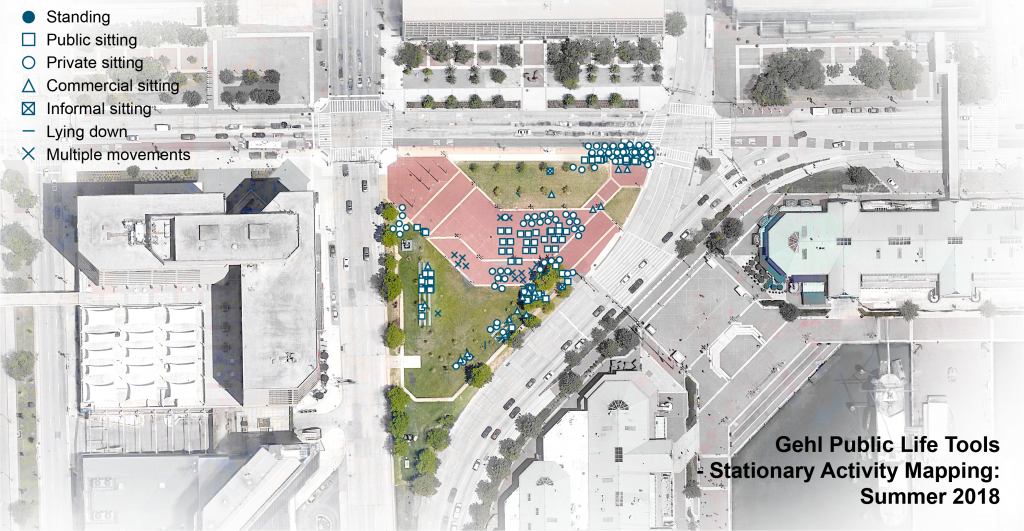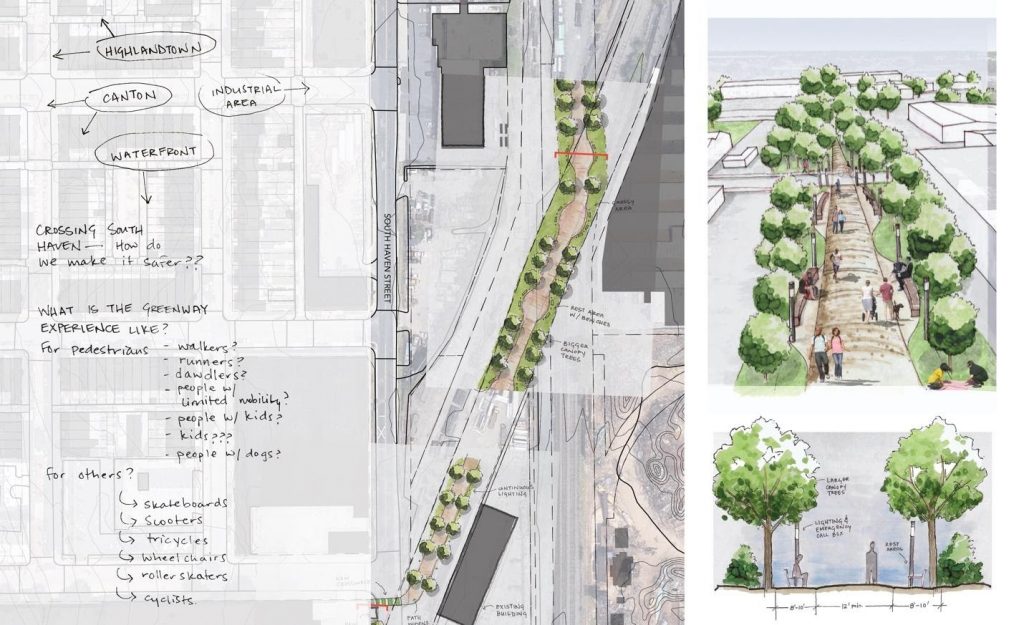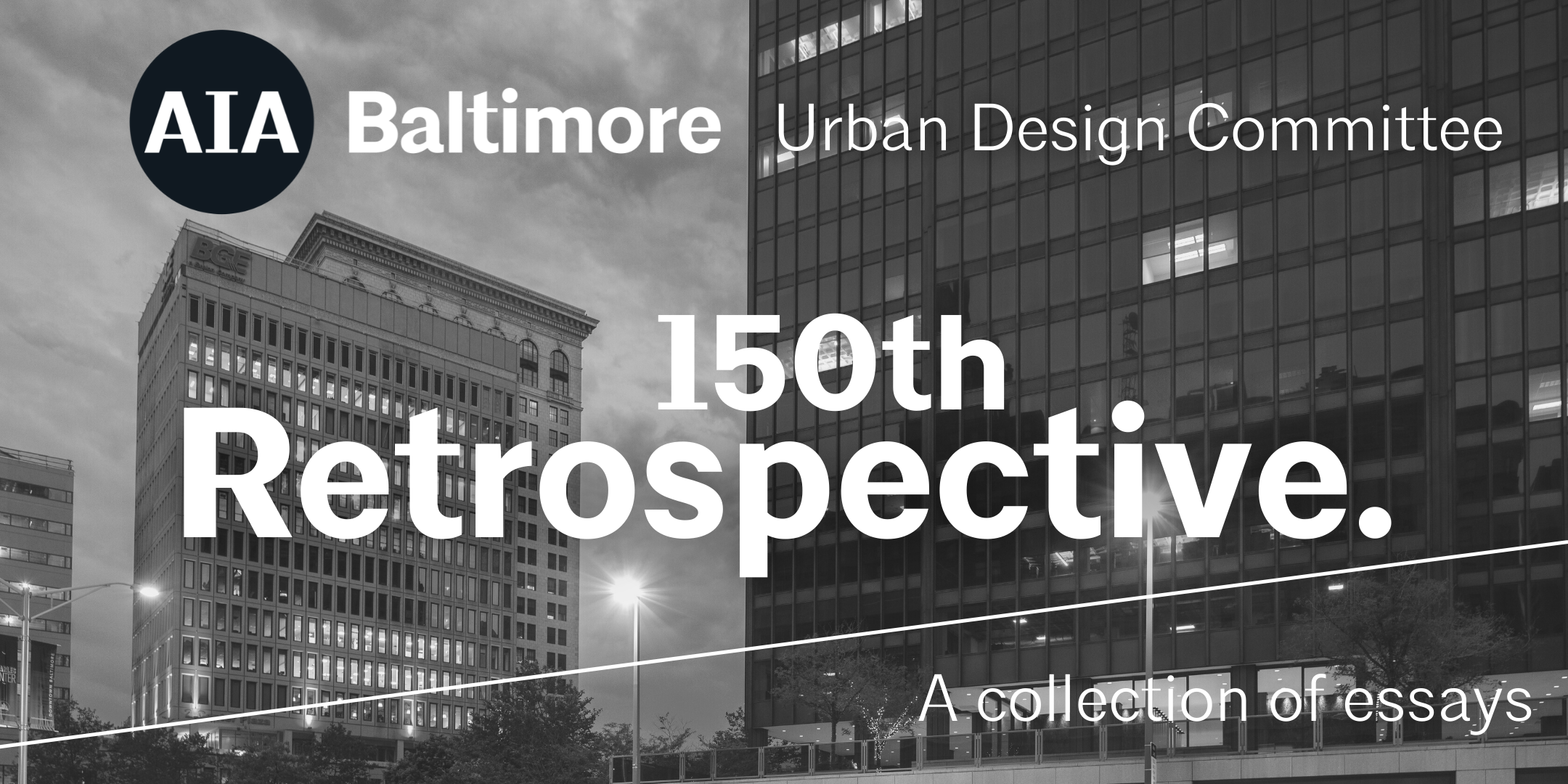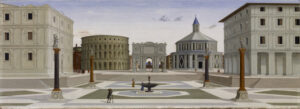Written by Ren Southard, Assoc. AIA
As we celebrate the history of AIA Baltimore and the Urban Design Committee (UDC), members have been contemplating what purpose the committee served in the past, and what role it will have in the coming years. One unwavering promise of UDC is its activism. Young and aspiring architects leave the hypothetical scenarios of school and arrive at the realities of private practice: desks outfitted with Revit, stacks of marked up drawing sets, and less time to achieve aspirations of changing the world. This divide between idealism and reality is exactly where I found myself when I emerged from grad school with an M.Arch and a Certificate in Urban Design. My early career was filled with technical details and big ideas, all through the lens of expediently producing the most efficient building for the client. This is the way of a market-driven economy: design, build, make a profit. And while most architects and firms are successful in producing quality designs, the day to day of private practice is a far cry from the aspirational place in which designers are hatched.
Recent graduates find themselves transitioning from a thesis year in which they explore utopian ideas set in complex settings. They explore methods for overcoming challenges in the built environment that have persisted in, and been reinforced by, racist policies. Thesis years are a point for stepping off into the future, for transitioning from pupil to practitioner. Most students select the kinds of challenges they would like to spend decades studying, but realities demand young architects focus on the details – the nuts and bolts of putting together a drawing set (and a building) and leaving little time to explore lofty ideas about the ideal public realm. I looked for ways to fill the aspirational void after school and found Baltimore to be a fascinating lab, an opportunity for activism in a city with both rich and repulsive histories.
Many American cities are deeply divided; the destructive physical remnants of redlining and freeway building persist despite efforts to repair neighborhoods. Designers and planners must question how much progress has been made during the past half-century. Injustices still exist. Occasionally a collective frustration appears, as with the uprising after the death of Freddie Gray. Important research by Dr. Lawrence T. Brown on the “Black Butterfly and the White L” (a term coined to describe the geography of the racial and economic divide) verifies the injustice academically. The problem has been validated, but it is yet to be solved. Despite the Fair Housing Act of 1968, the impacts of redlining are still highly visible in Baltimore. Blatant and obvious lines exist – evident by crumbling housing stock and aging infrastructure. Disinvestments in neighborhoods have real and lasting repercussions on residents. Using our expertise as designers to improve neighborhoods – especially those that have been historically disinvested – is an ethical imperative to the practice of urban design. Whether we contribute to pro bono projects at work, volunteer at Neighborhood Design Center, or show up to community meetings, it is our duty to the future and to our fellow citizens.
AIA Baltimore’s Urban Design Committee (UDC) has given me a way to exercise this imperative, and to act. I wanted to contribute by any means available, and since I was limited in private practice, joining UDC was my outlet. Even now, as a public servant, I still look to UDC as a space of collaboration and activism. UDC often fills a gap for organizations or communities by working on projects that don’t have traditional funding capabilities.

Image: Laura Wheaton, AIA and Matthew Fitzsimmons, AIA – Diagram of Gehl Public Life Tools – Stationary Activity Mapping.
The projects we focus on are those we believe can make a positive impact on Baltimore residents. The public life study for McKeldin Plaza considered how a public square might benefit residents and visitors with better connection to the waterfront, amenities, and programming. The Baltimore Greenway Loop project is part of a bigger effort, the Baltimore Green Network Plan. The Greenway will connect 25 miles of existing trails to form a continuous loop of green infrastructure in the city, linking schools, hospital campuses, job centers, and shopping districts to neighborhoods; it will give residents an alternative way to move about the city, whether on foot, bicycle, scooter or skateboard. The projects UDC focuses on are years in the making, and while this can sometimes feel daunting, we remind ourselves that cities weren’t built in a day and the challenges they face didn’t happen overnight. To make the public realm truly benefit the public, it will take a lot of effort from many different groups. UDC is one entity in a wider network, offering opportunities to share, collaborate, and influence. Moreover, UDC is an access point to working on something bigger.

Photo Credit: Ren Southard, Assoc. AIA. Studies for a Southeast segment of the Baltimore Greenway.
The Committee should reflect the city and its time – in its best form, it is at once genius loci and zeitgeist. UDC today reflects both the unique interest of current members and the larger design issues of Baltimore City. Thinking back to the birth of the committee, and the events in 1968 that preceded it, I am proud of the work our group has taken on and the positive impacts members have had on Baltimore’s neighborhoods. As we continue our work, we should aim to leave a legacy of activism, of fighting for good design in places that need it most, and for advocacy.
My hope for the future of UDC is to diversify and grow our membership – to bridge across age, race, and discipline. More diversity would allow us to advocate effectively, and to elevate voices that reflect the city we serve. Design is not, and cannot be, neutral. In the past, the design of the public realm has excluded and harmed. Members of the UDC are intent on making sure Baltimore is a city that welcomes and invites – a place in which the public spaces and urban fabric represent the values we hold as Baltimoreans.
“The Urban Design Committee aims to improve the quality of the urban realm by promoting excellence in design, planning, and public policy in the built environment. This will be achieved through public outreach, in concert with allied community and professional groups.”



